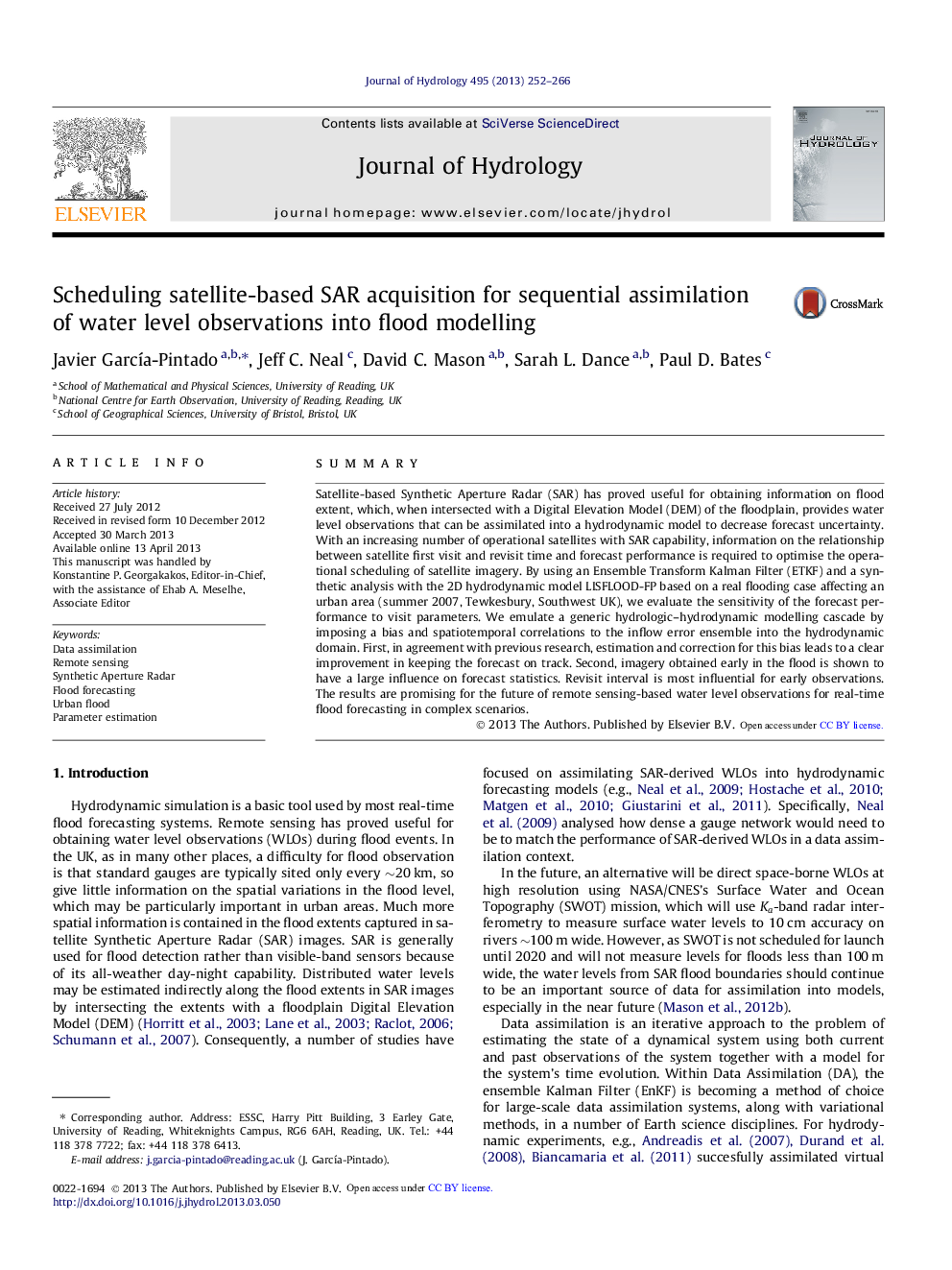| کد مقاله | کد نشریه | سال انتشار | مقاله انگلیسی | نسخه تمام متن |
|---|---|---|---|---|
| 6413707 | 1629953 | 2013 | 15 صفحه PDF | دانلود رایگان |

- We assimilate satellite SAR-derived water level with an ensemble filter (ETKF).
- We evaluate the forecast sensitivity to satellite first visit and revisit time.
- Online correction of imposed bias clearly improves the 2D flood model/DA forecast.
- Imagery obtained early in the flood has a large influence on the forecast.
- Revisit interval is most influential for early observations.
SummarySatellite-based Synthetic Aperture Radar (SAR) has proved useful for obtaining information on flood extent, which, when intersected with a Digital Elevation Model (DEM) of the floodplain, provides water level observations that can be assimilated into a hydrodynamic model to decrease forecast uncertainty. With an increasing number of operational satellites with SAR capability, information on the relationship between satellite first visit and revisit time and forecast performance is required to optimise the operational scheduling of satellite imagery. By using an Ensemble Transform Kalman Filter (ETKF) and a synthetic analysis with the 2D hydrodynamic model LISFLOOD-FP based on a real flooding case affecting an urban area (summer 2007, Tewkesbury, Southwest UK), we evaluate the sensitivity of the forecast performance to visit parameters. We emulate a generic hydrologic-hydrodynamic modelling cascade by imposing a bias and spatiotemporal correlations to the inflow error ensemble into the hydrodynamic domain. First, in agreement with previous research, estimation and correction for this bias leads to a clear improvement in keeping the forecast on track. Second, imagery obtained early in the flood is shown to have a large influence on forecast statistics. Revisit interval is most influential for early observations. The results are promising for the future of remote sensing-based water level observations for real-time flood forecasting in complex scenarios.
Journal: Journal of Hydrology - Volume 495, 12 July 2013, Pages 252-266